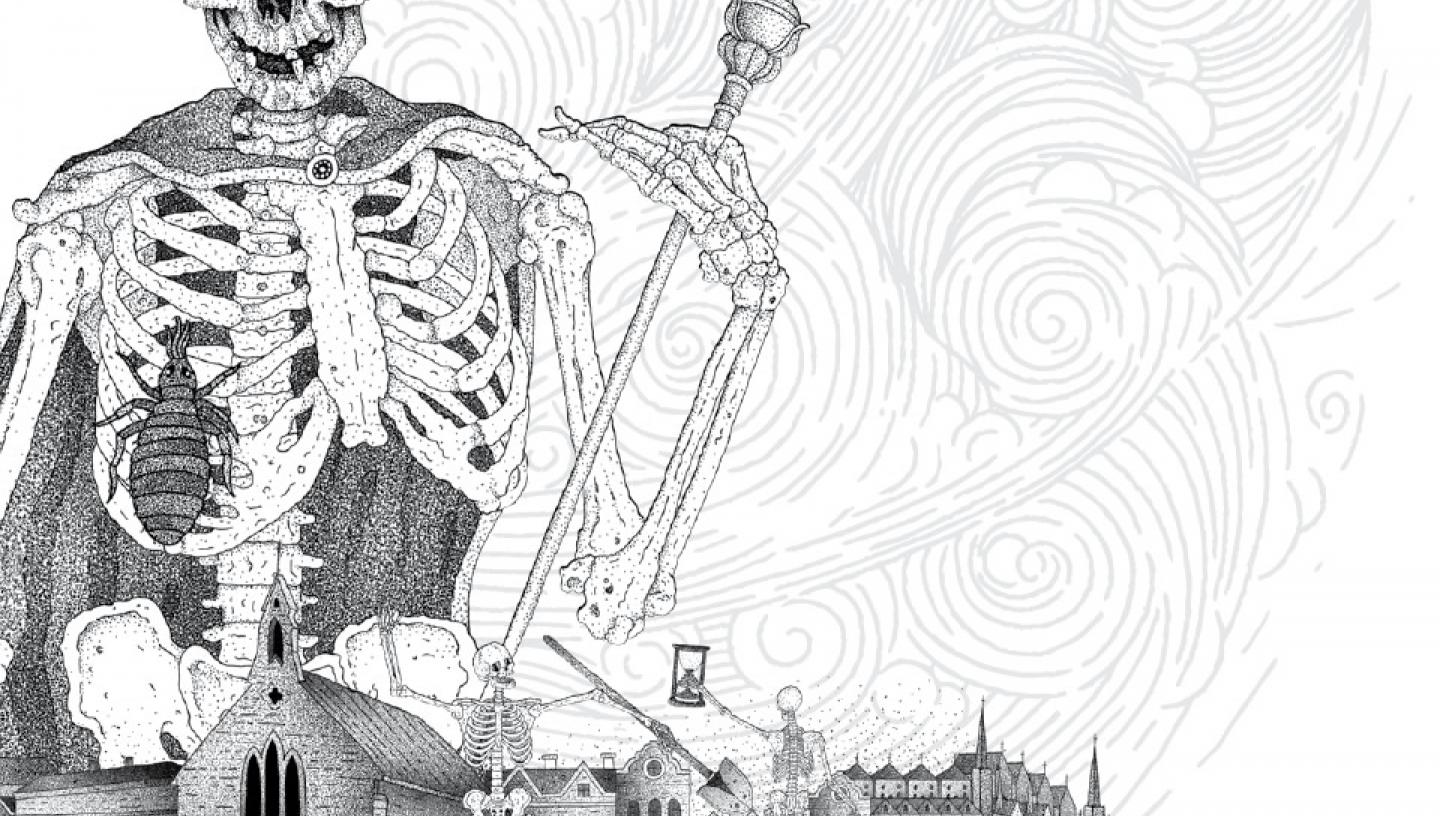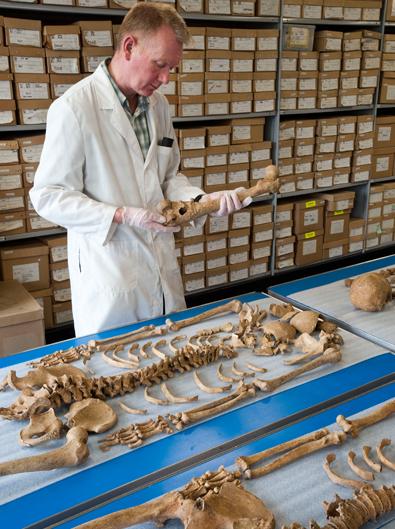
Essential Information
| Location |
National Maritime Museum
|
|---|---|
10 Nov 2015
Plague killed around 100,000 people in Pepys's London. We speak to the Museum of London Archaeology about how to find the bodies.
Today's blog was written by Don Walker, a Senior Human Osteologist at MOLA (Museum of London Archaeology). He excavates and researches the human remains of London’s past populations to understand more about their lives.
My day job is studying human bones. I find that this is a topic of great interest and curiosity to others I meet. A question that I am frequently asked when presenting a skeleton is: ‘what did they die of?’ Although we are dealing with the deceased, osteologists are usually more interested in how a person lived than how they died. We want to learn more about who the person was, the kind of environment they lived in and how healthy they were. Another reason for concentrating on their lives is that we rarely find evidence for the cause of death, unless they have suffered a particularly severe injury.

In truth, most deaths in the past, as today, involve illnesses that cannot be seen on the bone, for example, acute diseases, such as pneumonia or flu. Should someone die from an acute disease, it takes hold too quickly to see any changes on their bones. Archaeologists normally only find the skeletal remains of an individual and so we often have no indication of how they died.
However things are changing. Over the last 20 years there have been remarkable advances in the biochemical sciences, such as DNA analysis. Archaeologists have benefitted from these advances as scientists can now recover ancient DNA from bone, not only of the people themselves but of the diseases they were exposed to. As techniques become ever more advanced it has been possible to reconstruct genome level data from degraded remains.
In recent years there has been much research and new insight into plague pandemics. Not only is it now possible to test individual skeletons for the presence of the plague bacterium (Yersinia Pestis), scientists can track the history and evolution of the disease. For example, we now know the Justinian plague that ravaged the eastern Roman Empire in the 6th century was an evolutionary dead end, while the strain that caused the Second Pandemic which began with the Black Death in the 14th century was a precursor of those which survive today, although modern antibiotics are able to effectively treat the disease.
By taking a small sample of dentine from an individual’s tooth we can test for the presence of the disease. If the result comes back positive, we know that they were exposed to plague and therefore most likely died from it. So things are changing. Perhaps in the future we will be more able to answer the burning question ‘what did they die of?’
Discover more about the Great Plague and immerse yourself in one of the most vibrant and chaotic periods in our history at Samuel Pepys: Plague, Fire, Revolution